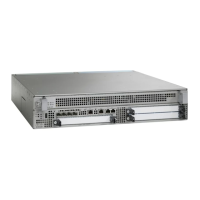DETAILED STEPS
PurposeCommand or Action
Configures an OSPF routing process and enters routing configuration
mode.
router ospf process-id
Example:
switch(config)# router ospf 123
Step 1
•
process-id—Internally-used, locally-assigned identifier for an
OSPF routing process. It can be any positive integer.
Defines the interfaces on which OSPF runs and the area identifier for
those interfaces.
network ip-address wildcard-mask area area-id
Example:
switch(config-router)# network 26.0.0.0
255.0.0.0 area 1
Step 2
•
ip-address—IP address of the area to be associated with OSPF.
•
wildcard-mask—Wildcard mask for the IP address to define a
range of IP addresses.
•
area-id—Area that is to be associated with the OSPF address
range.
Configures an OSPF area as being a stub area or a not-so-stubby area.
area area-id {stub | nssa}
Example:
switch(config-router)# area 1 stub
Step 3
Enables authentication for an OSPF area.
area area-id authentication {message-digest
| cleartext}
Step 4
•
area-id—Identifier of the area for which authentication is being
enabled. This should be a decimal value.
Example:
switch(config-router)# area 0
authentication message-digest
• message-digest—Enables message digest 5 (MD5) authentication
on the area.
• cleartext—Enables clear text authentication on the area.
Configures the router to send a syslog message when an OSPF neighbor
goes up or down.
log-adjacency-changes
Example:
switch(config-router)#
log-adjacency-changes
Step 5
Specifies that a fixed router ID is to be used.
router-id ip-address
Step 6
Example:
switch(config-router)# router-id 26.0.0.2
•
ip-address—Router identifier in IP address format.
Configuring BGP for Proximity Calculations
Use this task to configure the Border Gateway Protocol (BGP) routing process for proximity calculations
performed by the proximity engine.
Cisco Network Positioning System Configuration Guide for the Cisco ASR 1000 Router, Release 1.0
22 OL-25794-01
Configuring the Routing Protocols Used for Network Proximity
Configuring BGP for Proximity Calculations

